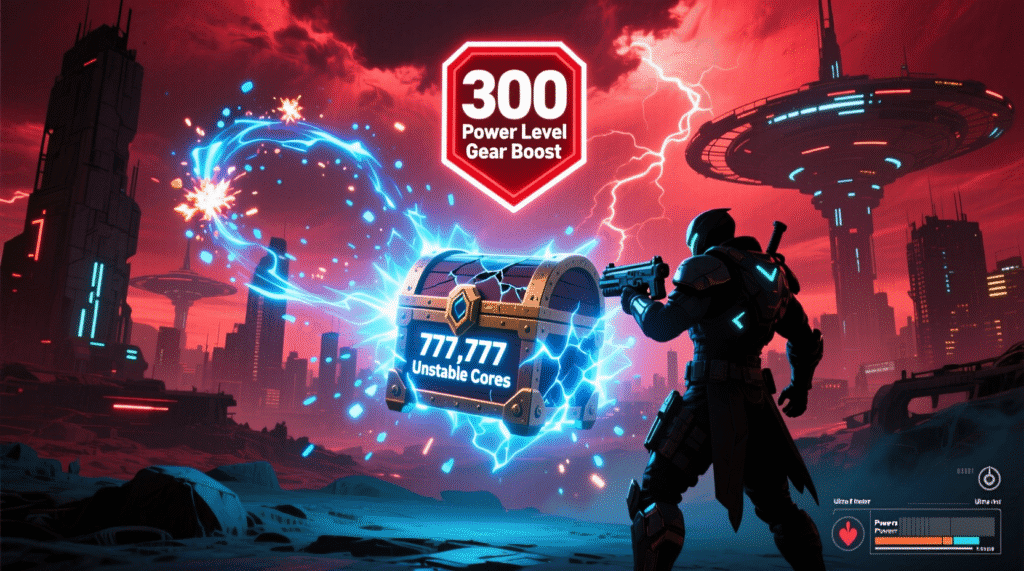The ULTIMATE Arc Raiders Looting Guide for Fast Snowballing — This in‑depth intro lays out exactly how to snowball from day one by mastering augments, inventory limits, safe pockets, and weight management so every raid converts into banked value. You’ll learn why augments trade carry capacity for combat stats, how quick‑use slots and shield tiers are tied to your augment, and how to use the single‑slot‑but‑weighted inventory system to your advantage by stashing heavy items where they can be dropped instantly mid‑fight.
The guide decodes the zone‑to‑container logic—showing that items are bound to container types while zones simply concentrate those containers—so you route through mechanical, industrial, electrical, technological, medical, commercial, security, ARC, and nature areas with purpose. From there it moves into no‑BS tactics: early extracts after fast hits on high‑value caches, night‑raid mini‑boss farming for massive ARC materials and XP, and efficient cache‑spawn memorization with interactive maps to turn knowledge into compounding loot. Finally, it tackles mindset with practical steps to beat gear fear so you can bring real kits, win more PvP, push higher‑tier zones, and start a sustainable loop of extracting stronger and richer every session.
Also Read: How to Get Goxul in Be an Alien (Guide)
Arc Raiders Looting Guide for Fast Snowballing
Need‑to‑know basics
Augments determine your general inventory capacity, quick‑use slots, and which shield tier you can equip, forcing a trade‑off between carry space and combat stats. You start with one safe pocket slot (non‑gun items persist through death), potentially scaling up to three with top‑tier augments, while every item is one slot but carries weight that can over‑encumber you. A practical tip is to place heavy items (like guns) at the bottom‑right of your inventory so you can drop them instantly to regain full movement.
Loot types and zones
Item categories (e.g., basic/advanced materials, recyclables, trinkets, keys) are less critical than the “can be found in” zone info, which hints at where container densities are highest. Drops are tied to container types rather than zones themselves, but zones predict which containers you’ll encounter more often, such as computers in technological areas. For example, you won’t find a processor in a grenade crate, but you will in computer‑type containers commonly found in technological zones.
Zone highlights
- Mechanical: Dense recyclables and weapon/attachment crafting materials like oil, tools, and mechanical components for bench upgrades and refining.
- Industrial: Basic crafting materials and components used to upgrade benches or break down into fundamentals.
- Electrical: Key components for high‑value consumables (e.g., raider hatch keys, photoelectric cloak, snap hook) plus common inputs for shields, augments, and gadgets.
- Medical: Heals, medical crafting inputs, bench upgrades, and quest items in high density.
- Commercial: High‑value trinkets for credits, mid‑tier mats like duct tape, and recyclables such as radios that break down into useful parts like sensors.
- Technological: Higher‑tier components such as processors and sensors used for gadgets, explosives, and quests, overlapping with electrical.
- Security: High‑tier zone with attachments, blueprints, caches, and locked security lockers, drawing heavy traffic at locations like control tower and hydroponic dome on Dam.
- ARC: Materials (circuitry, alloy, power cells) from ARC enemies, probes, couriers, and husks, used heavily for shield crafting and repairs.
- Nature: On‑the‑go buff foods, seeds to trade with Celeste for materials, and items to upgrade Scrappy the Rooster for recurring basic mats.
Practical snowball tips
- Extract early with a full bag: sprint to the nearest high‑value area, hit weapon cache spots along the path, take at most one fight, and leave once full—often in under 10 minutes.
- Kill mini‑boss ARCs (Rocketeer, Bastion, Sentry, Leaper), especially at night, to earn large volumes of ARC materials and excellent XP for skill progression.
- Memorize weapon/grenade/medical cache spawns using an interactive map so you can quickly check high‑value nodes during rotations.
- Fight gear fear: once you can assemble one to two solid kits, bring them to raids to win more PvP, hit higher‑tier zones, and snowball faster.
Early route example
On the daytime Dam map, there was a guaranteed weapon cache during the server slam reachable by entering a door and lowering a drawbridge, though this could change post‑release. Keep this route in mind as a fast opener, but always verify in the current build and pivot if the spawn isn’t active.
Inventory and weight management
Since every item is one slot but has weight, over‑encumbrance can cripple your mobility during third‑party engagements. To counter this, practice fast drops of heavy items and tune your augment choice to balance carry capacity with survivability based on current goals.
Working the security ecosystem
Security zones reliably house top‑end loot sources—attachments, blueprints, ammo/grenade/weapon caches, and locked lockers—so expect competition and plan entries with caution. Prioritize quick checks, commit when clear, and chain security nodes with known cache spawns to maximize value per minute.
ARC material farming
ARC probes, couriers, and husks provide breachable caches of ARC resources, while mini‑boss kills can yield tens of thousands of credits’ worth of materials in a single night run. These inputs are essential for shields and related consumables, making ARC loops a backbone of sustainable progression.
Beginner priorities
Pick augments that fit the plan—inventory‑leaning for loot runs or combat‑leaning for PvP and mini‑boss hunts—then route through zones rich in the container types you need. Use early extracts to bank wins, learn cache locations, and escalate into security and ARC loops once your kit and map knowledge improve.
Hi, I’m Haider Ali, an Author and co-Founder at tigerjek.com and part of the TigerJek team. I hold a Bachelor of Technology in Computer Science from Shri Ramswaroop Memorial University. I’m passionate about technology, Education, and web development, and I enjoy creating informative content that helps readers learn and explore new ideas. Through TigerJek, I aim to share useful knowledge and make digital learning accessible to everyone.




